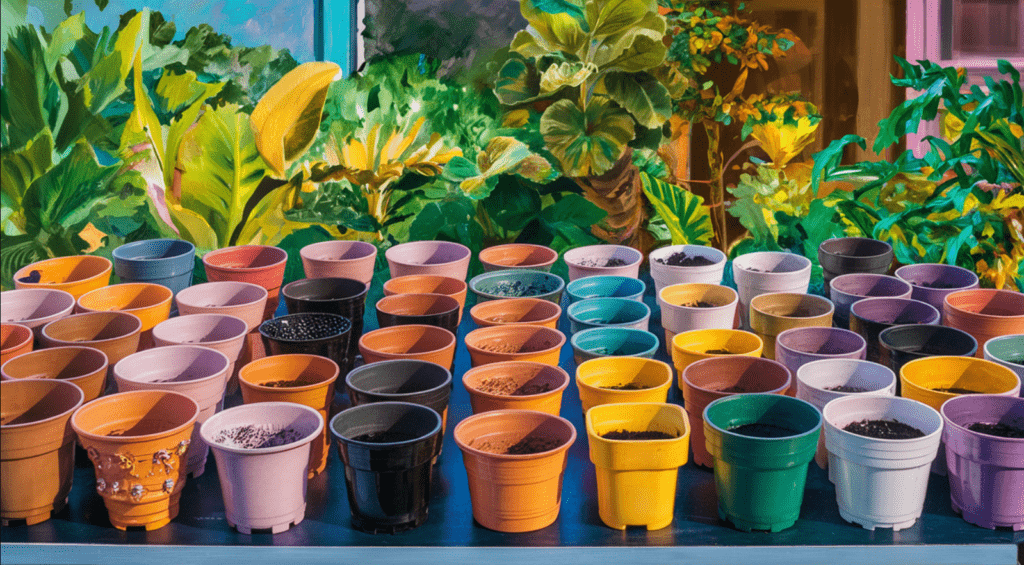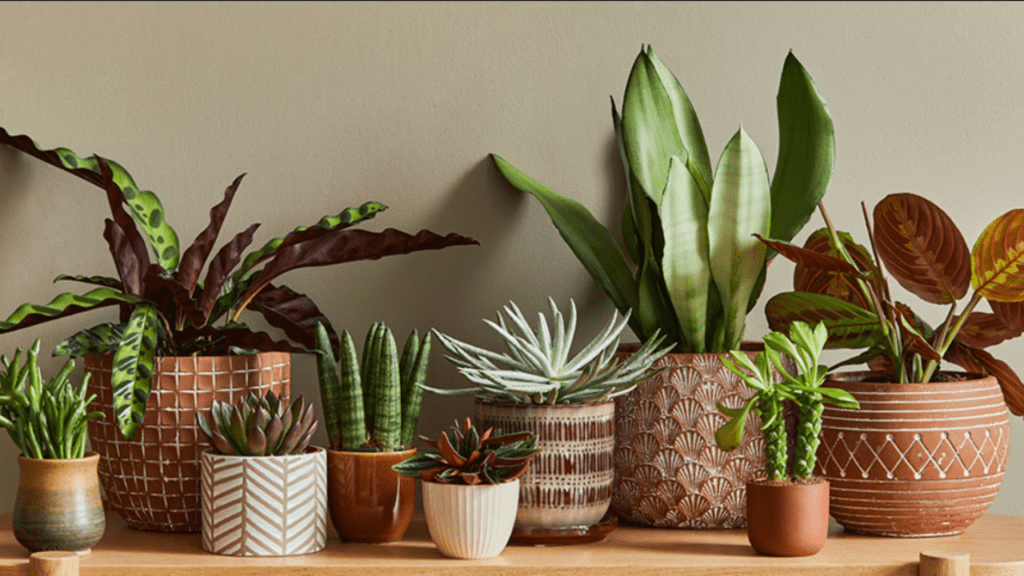
Best Pots for Indoor Plants: Choosing the Perfect Containers
Selecting the right pots for your indoor plants is essential for their health and growth. The ideal pot not only provides adequate space for the plant’s roots but also ensures proper drainage and ventilation. With a plethora of options available, ranging from terracotta to ceramic, plastic, and decorative containers, finding the best pots for your indoor plants can seem daunting. However, understanding the needs of your plants and considering factors such as material, size, and drainage can help you make informed decisions and create an optimal environment for your green companions.
Houseplants have become ubiquitous in our homes, adding a touch of life, beauty, and natural air purification. But what you might not realize is that the pot you choose for your leafy friend can significantly impact its health and happiness. The right pot provides essential drainage, airflow, and support, while the wrong one can lead to root rot, stunted growth, and a sad, wilting plant. Fear not, plant enthusiasts! This guide will help you navigate the world of pots and choose the perfect container for each of your indoor botanical companions.
Table of Contents
ToggleUnderstand the Needs of Your Plants
To help your indoor plants grow well, you need to know more than just giving them water and sunlight. Each plant has its own needs to stay healthy and strong. Understanding these needs is important for successful indoor gardening. Plants need different amounts of light, water, and the right soil. They also like different levels of humidity in the air. By learning what your plants need, you can take care of them better and make your indoor space look beautiful with greenery.
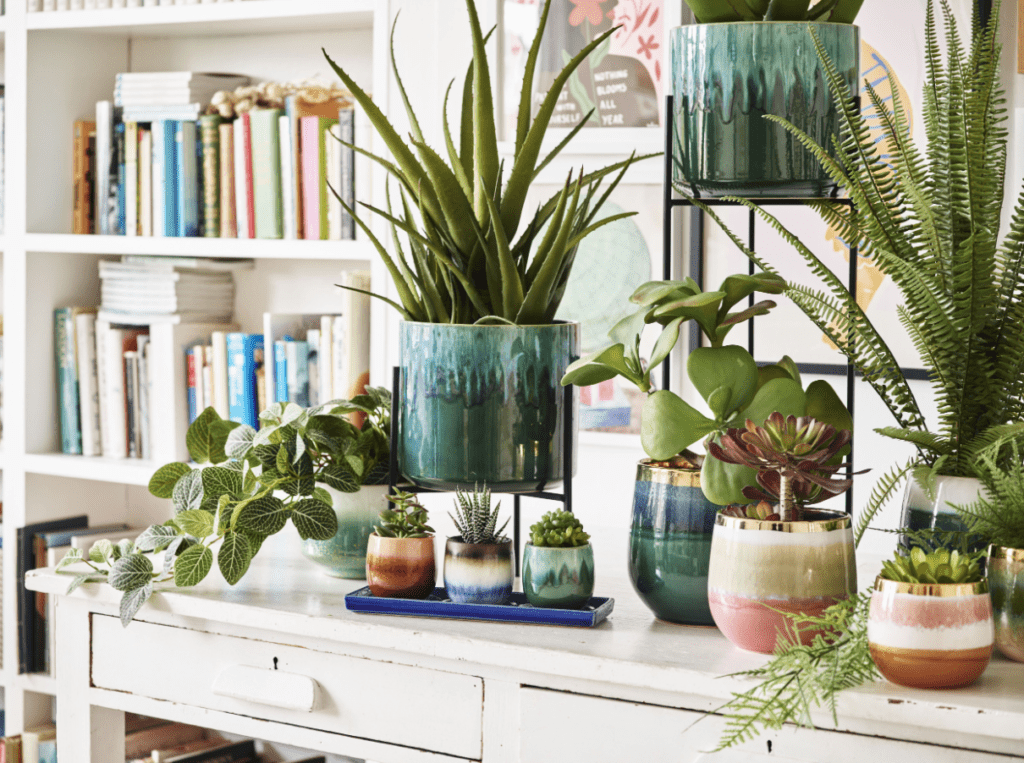
Light Requirements
Plants need light to grow, but some need more light than others. Before getting a new plant, find out how much light it likes. Some plants like a lot of light from the sun, while others prefer less light. Think about where the light comes from in your home and place your plants there. If your plants need a lot of light, put them near a window that gets a lot of sun. If they need less light, put them in a spot where they can still see the sun but not too much.
Watering Needs
Plants need water to stay alive, but giving them too much or too little water can be bad for them. Check the soil to see if it’s dry before watering your plants. Insert your finger about an inch into the soil. If it feels dry, it’s time to water. Each plant has unique water needs, so observe and adjust accordingly. Some plants require more frequent watering, while others thrive with less. It’s important to find the right balance.
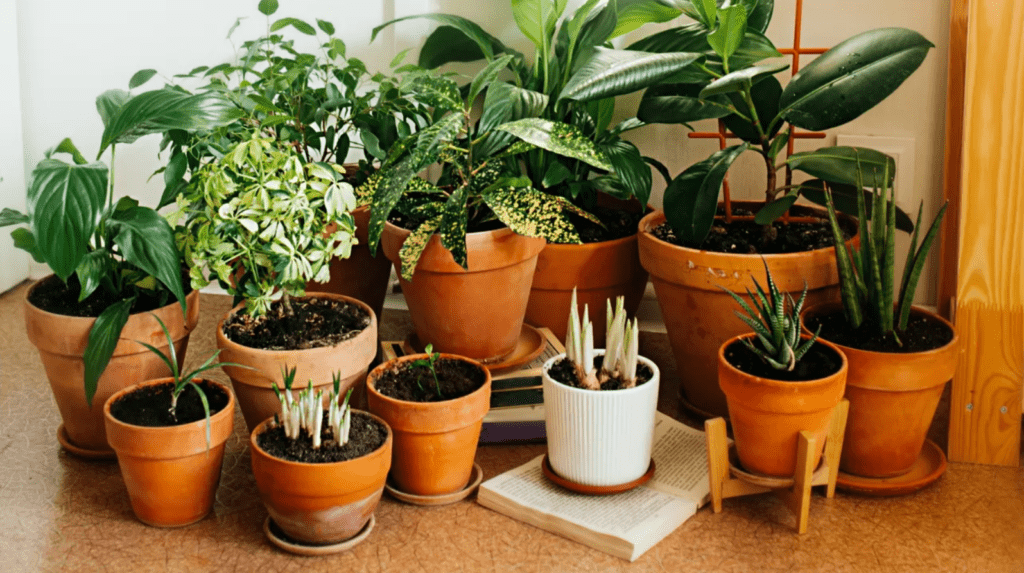
Soil Type
The soil you use for your indoor plants is important for their growth. Good soil lets water drain out so the roots don’t get too wet. Don’t use soil from outside because it can be too heavy for indoor plants. Instead, use potting soil made for indoor plants. You can also add things like perlite, vermiculite, or coco coir to help the soil drain better.
Humidity Levels
Some plants like a lot of humidity, while others don’t need as much. Indoor air is usually drier than outdoor air, which can be a problem for some plants. You can increase the humidity around your plants by putting a tray of water nearby or using a humidifier. You can also group your plants together to make a mini jungle, which helps keep the air around them moist.
Consider the Material of the Pot
Absolutely, choosing the right material for your pot is vital for the health of your indoor plant. Here’s a breakdown of the most common pot materials and how they impact your plant:
Terracotta
- Pros: Porous material allows for excellent drainage and air circulation, perfect for plants that prefer drier conditions like cacti, succulents, and herbs. Affordable and classic look.
- Cons: Can dry out soil quickly, requiring more frequent watering.
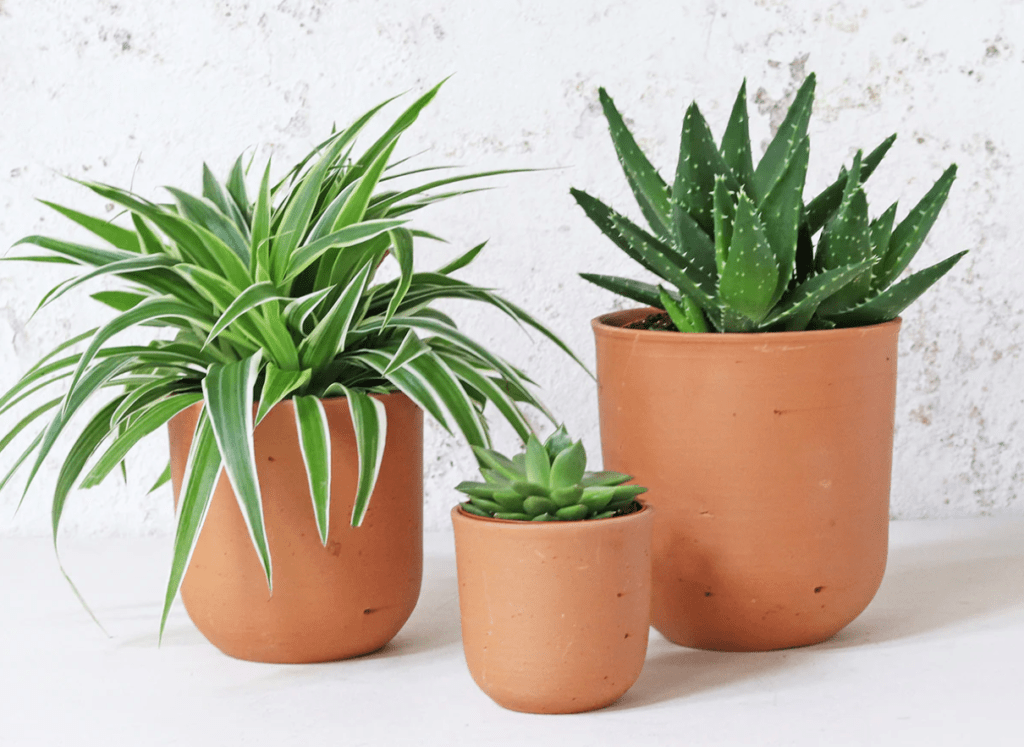
Glazed Ceramics
- Pros: Wider variety of colors, styles, and designs to match your decor. Glazing helps retain moisture more than terracotta, ideal for plants that prefer evenly moist soil like ferns and African violets.
- Cons: Drainage can be slower due to glazing, increasing risk of overwatering. Can be heavier than plastic pots.
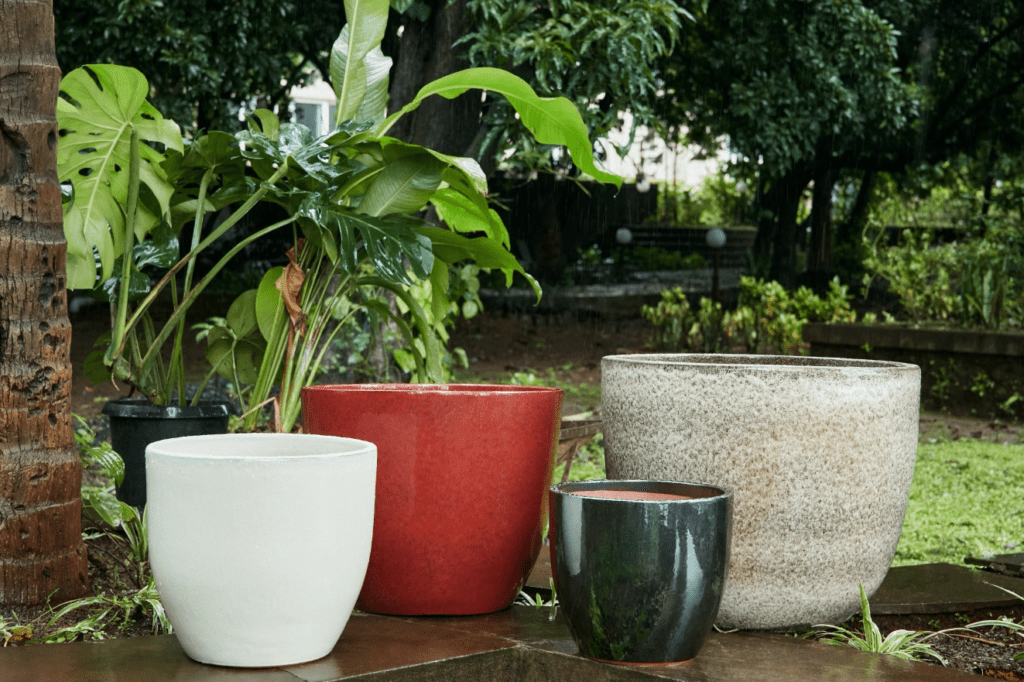
Plastic
- Pros: Lightweight, affordable, and available in various sizes and colors. Good moisture retention, suitable for plants that dislike drying out completely.
- Cons: Can restrict air circulation to the roots, potentially leading to root rot. Less aesthetically pleasing than some other options. Choose pots with drainage holes to avoid waterlogging.
Metal, Concrete, and Fiberglass
- Pros: Offer a modern and sleek aesthetic, ideal for contemporary spaces.
- Cons: Drainage is often absent or limited, requiring extra care to avoid overwatering. Can be heavy and expensive. Ensure these pots have drainage holes or use a very well-draining potting mix if drainage is limited.
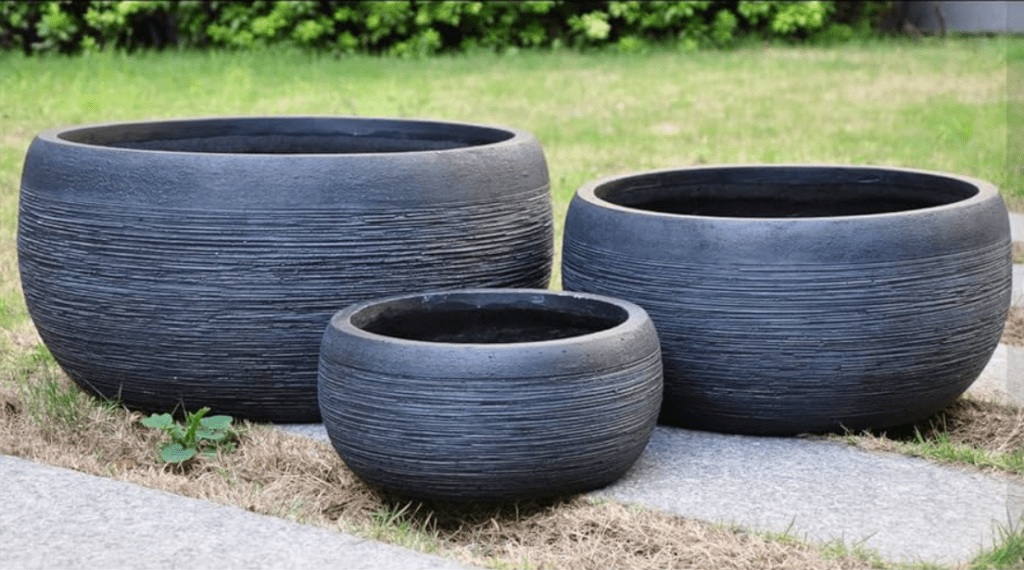
Additional Considerations:
- Wood: While attractive, wood can rot over time and is not ideal for most houseplants due to drainage limitations.
- Hanging Baskets: Choose breathable materials like wire or wicker for hanging baskets to allow for proper air circulation and prevent moisture build-up.
By considering the moisture needs of your specific plant and the drainage properties of the pot material, you can create the optimal environment for root health and happy growth.
Choose the Right Size and Shape
When it comes to choosing the right pot for your indoor plant, size and shape are just as crucial as material. Selecting the appropriate dimensions ensures proper drainage, root growth, and overall plant health. Here’s what you need to know:
Size Matters: Finding the Goldilocks Zone
- Not Too Big, Not Too Small: A pot that’s too large can retain excess moisture, leading to root rot. Conversely, a pot that’s too small will restrict root growth and hinder the plant’s ability to take up water and nutrients.
- The 1-2 Inch Rule: As a general rule of thumb, choose a pot that’s 1-2 inches wider in diameter than the root ball of your plant. This allows for enough space for the roots to grow comfortably without becoming overcrowded, while also allowing for proper drainage.
- Consider Future Growth: While you don’t want a pot that’s excessively large for your current plant, remember that most plants will eventually outgrow their containers. Choose a pot that allows for some room for future growth, but avoid going overboard.

Shape Up for Success: Round vs. Square
- The Classic Round Pot: The most common pot shape, round pots offer a good balance of drainage and root space. They work well for most houseplants, especially those with symmetrical root systems.
- Square Pots: Space Savers with Benefits: Square pots can be particularly beneficial for space-saving arrangements. They utilize corners efficiently and allow plants to be placed closer together. Additionally, the squarer shape can provide more surface area for the potting mix, which can be helpful for moisture-loving plants.
- Unique Shapes for Unique Plants: Hanging baskets are a great option for trailing plants that cascade down. However, ensure the basket is made of a breathable material like wire or wicker to allow for proper air circulation and prevent moisture build-up. Tall and narrow pots are ideal for plants with deep taproots, such as certain palm varieties.
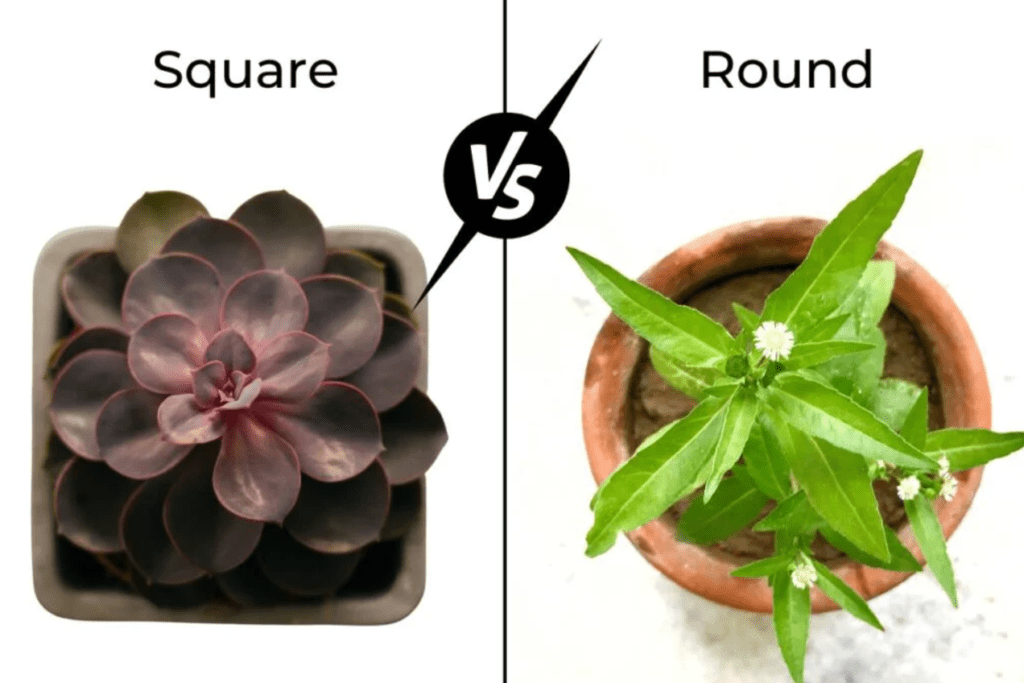
Matching Size and Shape to Plant Needs:
- Fast Growers vs. Slow Growers: Fast-growing plants like philodendrons or spider plants will likely need to be repotted more frequently than slow growers like snake plants or ZZ plants. Consider this when choosing the initial pot size for a fast grower – you might opt for a pot that’s slightly larger to accommodate future growth.
- Root Systems: Plants with shallow root systems, like succulents or African violets, will do well in shallower pots. Plants with deep taproots, like certain palm varieties, will require taller pots to accommodate root growth.
By understanding the relationship between pot size, shape, and your plant’s growth habits, you can create the optimal environment for your indoor plant to thrive Keep in mind, choosing the right pot is an investment in the long-term health and well-being of your leafy friend. Happy planting!
Drainage is Key
The Root of the Problem (and the Solution)
- Excess Moisture, the Enemy: Most houseplants despise sitting in soggy soil. Overwatering, combined with poor drainage, can lead to root rot, a fungal disease that can be fatal. Root rot thrives in constantly moist conditions, causing the roots to suffocate and rot.
- The Drainage Dance: Drainage holes in your pot allow excess water to escape after watering, preventing the roots from becoming waterlogged. This promotes healthy root growth and oxygen circulation, essential for optimal plant health.
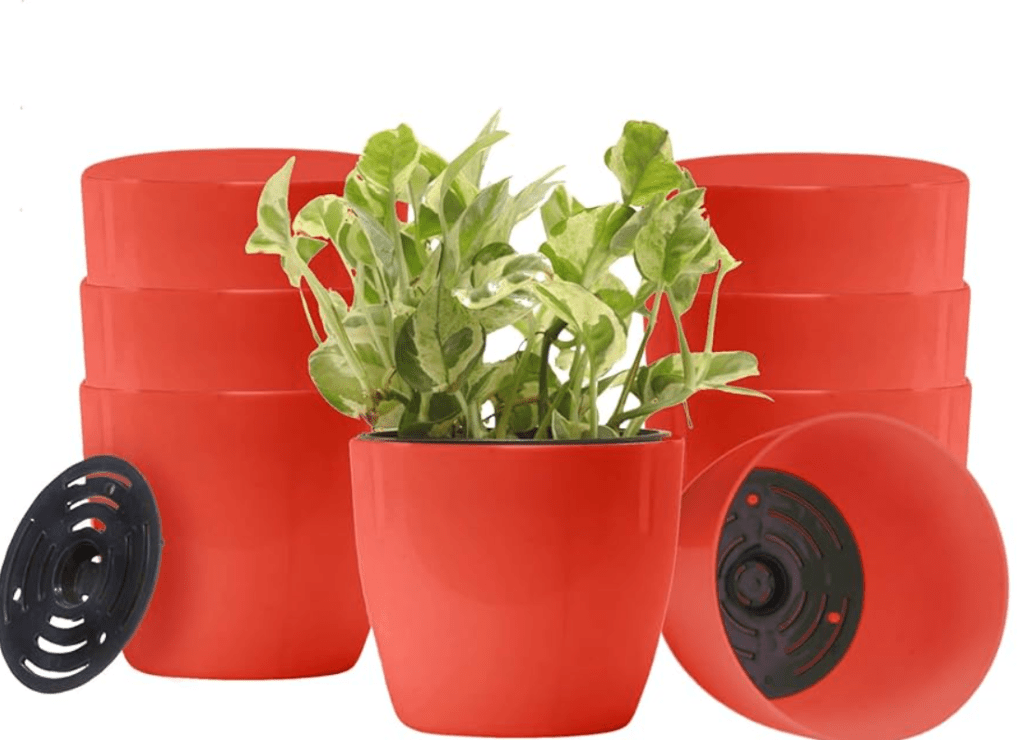
Signs of Drainage Distress
- Wilting Leaves: Don’t be fooled! Wilting leaves can be caused by both underwatering and overwatering due to poor drainage.
- Mushy Stems or Leaves: This is a telltale sign of root rot caused by excessive moisture.
- Slow Growth or Stunted Appearance: If your plant seems stagnant or isn’t growing as expected, drainage issues could be the culprit.
Drainage Solutions
- Drainage Holes are a Must: When choosing a pot, ensure it has drainage holes at the bottom. This allows excess water to drain away after watering.
- Catchy Companions: Pair your pot with a saucer to collect the draining water. Empty the saucer promptly to prevent your plant from sitting in water.
- Material Matters: The material of your pot also plays a role in drainage. Terracotta pots, for example, are known for their excellent drainage due to their porous nature. Glazed ceramic pots retain moisture more, so be extra cautious about overwatering with these.
Remember: Drainage is the foundation for a healthy root system, which in turn translates to a thriving plant. By prioritizing drainage, you’re setting your indoor botanical companions up for success!
Consider the Aesthetic Appeal
Matching Pot to Plant
- Complementary Colors: Consider the foliage and flower color of your plant. Choose a pot in a contrasting or complementary color to create a visually appealing combination. For example, a vibrant green pothos can look stunning in a deep red pot, while a white orchid might be beautifully accentuated by a charcoal gray container.
- Texture Play: Experiment with mixing and matching different textures. Juxtapose the smooth leaves of a fiddle leaf fig with a rough terracotta pot, or pair the delicate fronds of a maidenhair fern with a sleek ceramic container.
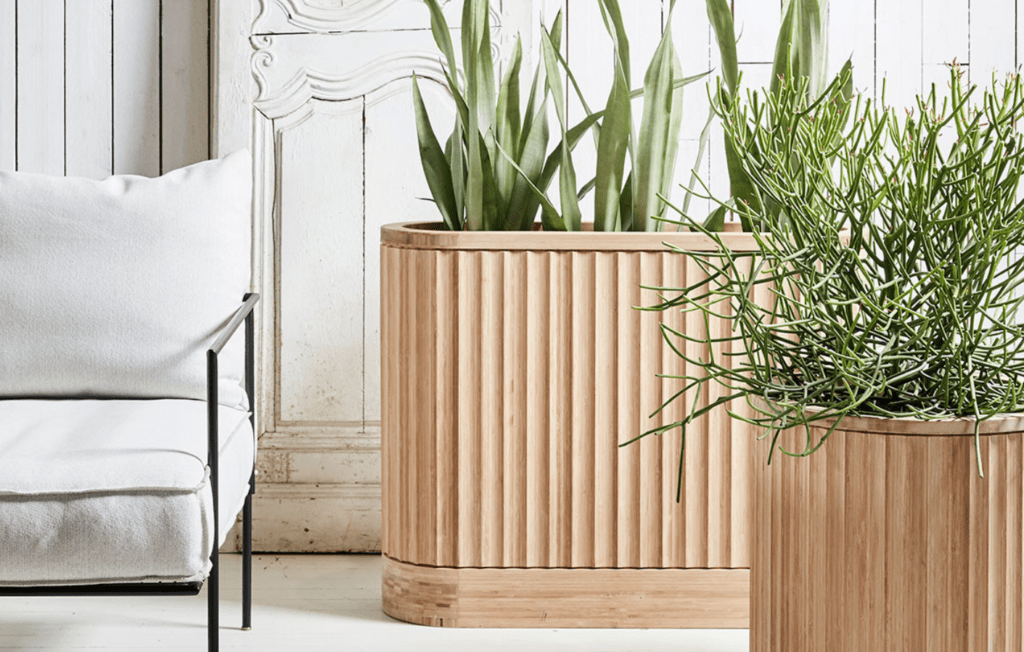
Style Synergy
- Modern Marvels: For a contemporary space, opt for sleek metal or concrete pots with clean lines. These complement minimalist décor and add a touch of urban sophistication.
- Rustic Charm: Terracotta pots with their natural, earthy tones add a touch of rustic charm to your space. They pair beautifully with bohemian or farmhouse styles.
- Vintage Vibes: Upcycled vintage containers like tins, baskets, or watering cans can add a unique and quirky touch to your décor.
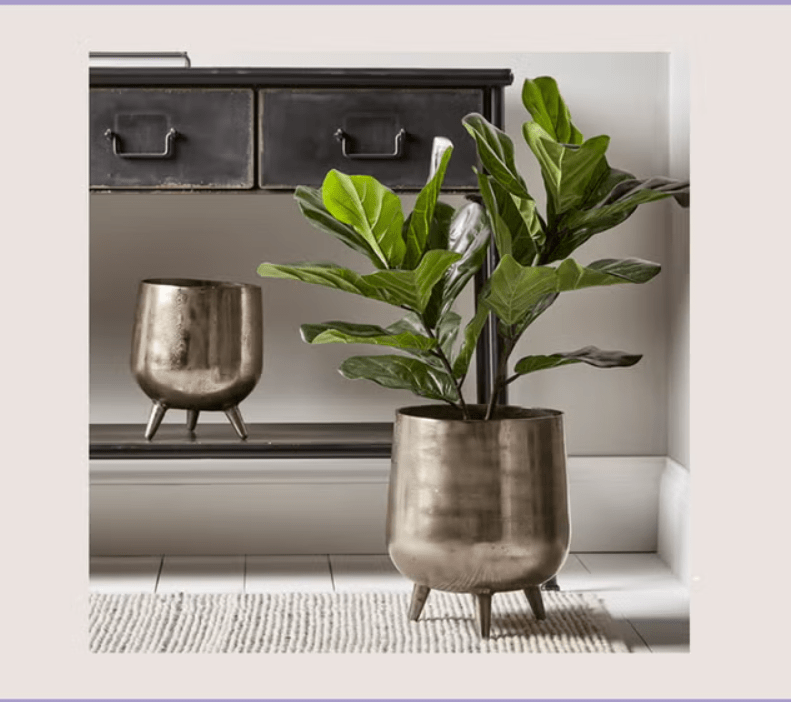
Pottery Parade
- A Collection, Not a Crowd: While it’s tempting to have a variety of pot styles, using too many different designs can create a cluttered look. Aim for a cohesive aesthetic by choosing pots with a common theme, such as color palette, material, or style.
- Size Matters (for Visual Balance): Play with the scale of your pots. Group a large plant in a statement pot with smaller plants in complementary pots to create a visually interesting arrangement.
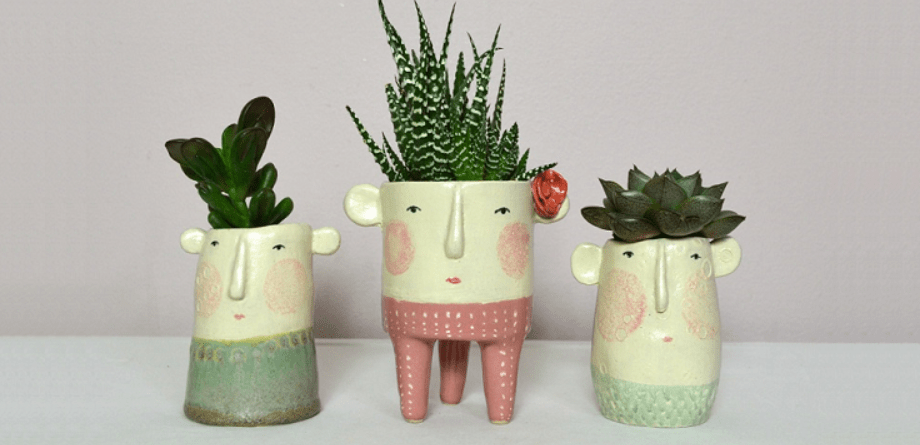
Beyond the Pot
- Saucer Savvy: Even with drainage holes, some water might collect in the saucer. Choose saucers that complement the pot or opt for decorative trays to add another layer of visual interest.
- Plant Stands and Risers: Elevate your plants on plant stands or risers to create a layered effect and showcase them at eye level. This is particularly effective for smaller plants or those with cascading foliage.
By considering your plant’s needs alongside your design preferences, you can choose a pot that enhances both the beauty of your plant and the overall aesthetic of your home. Remember, your houseplants deserve stylish homes too!
Research and Shop for the Best Options
Now that you’ve explored the key considerations for choosing the perfect pot for your indoor plant, it’s time to translate knowledge into action! Here’s how to effectively research and shop for the best options to house your botanical companions:
Research Like a Pro
- Plant Power: Start by researching the specific needs of your plant. Different varieties have varying preferences for moisture and drainage. Understanding these needs will guide your pot material selection. Online resources, gardening books, or consultations with plant experts can be helpful.
- Material Marvels: Delve deeper into the pros and cons of different pot materials like terracotta, glazed ceramic, plastic, and modern options. Consider factors like drainage, weight, durability, and aesthetics.
- Drainage Detectives: Pay close attention to drainage options. Look for pots with drainage holes and ensure they’re not obstructed by pebbles or potting mix. If drainage is limited, choose a very well-draining potting mix to compensate.
Shopping Savvy
- Size It Up: Measure your plant’s root ball and choose a pot 1-2 inches wider in diameter to allow for future growth.
- Shape Up: Consider the shape of your plant and choose a pot that complements its growth habit. Round pots work well for most plants, while square pots can be space-savers. Hanging baskets suit trailing plants, and tall pots are ideal for deep-rooted varieties.
- Material Matchmaker: Once you understand your plant’s needs and the pros and cons of different materials, choose the material that best suits both. For example, cacti and succulents thrive in terracotta, while ferns prefer moisture-retaining glazed ceramic.
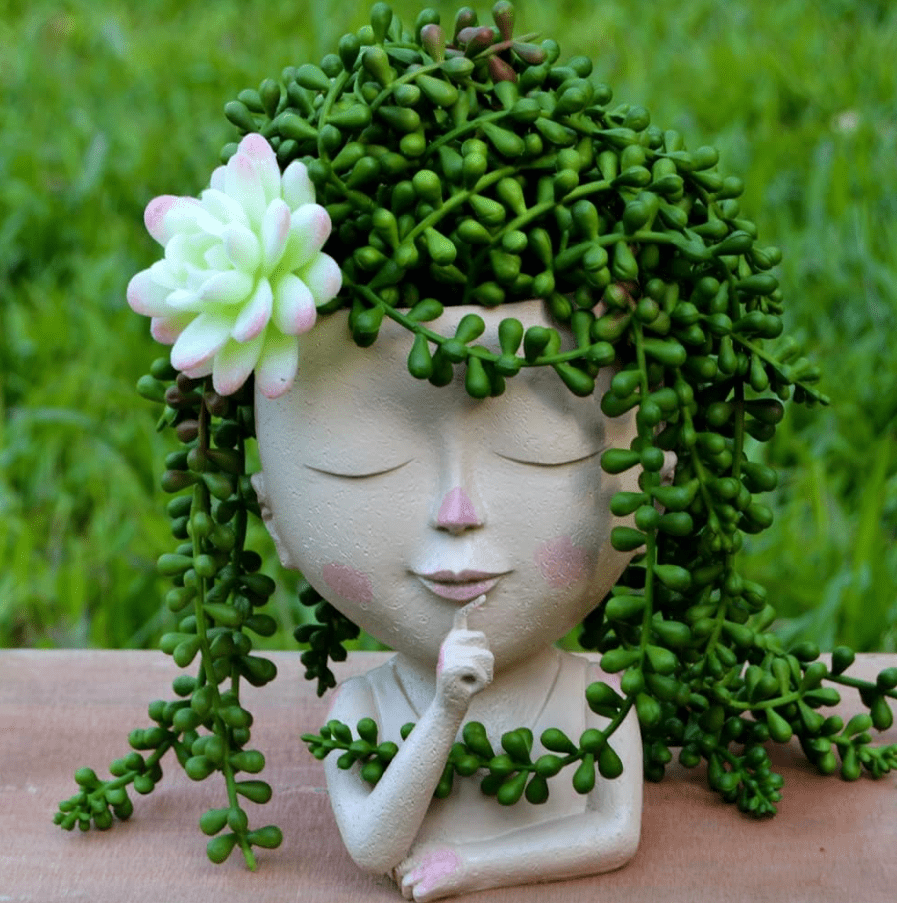
Shopping Spree
- Local Nurseries: Support local businesses and benefit from expert advice. Many nurseries offer a wide variety of pots in different materials, sizes, and styles.
- Online Retailers: The internet offers a vast selection of pots at various price points. Read reviews and compare features before making a purchase.
- Discount Stores and Thrift Shops: Surprise finds await! You might unearth unique and affordable pots at discount stores or thrift shops. Just ensure they have drainage holes or you can create them if necessary.
Bonus Tip:
- Think Outside the Box (or Pot): Get creative! Upcycle vintage containers like tins, baskets, or buckets into unique planters. Just ensure proper drainage by adding drainage holes or using a liner.
With thorough research and a focus on both functionality and aesthetics, you’re well on your way to finding the perfect pots for your indoor plant collection. Remember, a happy plant starts with a happy pot – choose wisely and watch your indoor jungle flourish!
Frequently Asked Questions (FAQ)
The best materials for indoor plant pots depend on various factors, including plant preferences, aesthetics, and environmental conditions. Popular options include terracotta for its porous nature, ceramic for its decorative appeal, plastic for its lightweight and affordability, and decorative containers for adding style to your indoor space.
When choosing a pot size for indoor plants, it’s essential to consider the plant’s current size and growth habits. Opt for a pot that provides ample room for the plant’s roots to grow, typically 1-2 inches larger in diameter than the plant’s current pot. Avoid pots that are too large, as excess soil can retain moisture and lead to root rot.
Yes, drainage holes are crucial for indoor plant pots to prevent waterlogging and root rot. Proper drainage allows excess water to escape from the soil, ensuring that the plant’s roots receive adequate oxygen and preventing water-related issues.
The frequency of repotting indoor plants depends on various factors, including plant species, growth rate, and pot size. As a general guideline, consider repotting plants when their roots outgrow their current container or when the soil becomes compacted and waterlogged. Repotting is typically done every 1-2 years for most indoor plants.
While decorative containers without drainage holes can be used for indoor plants, it’s essential to take extra precautions to prevent waterlogging. Consider using a plastic nursery pot with drainage holes inside the decorative container to allow for proper drainage while still enjoying the aesthetic appeal of the outer pot.
To prevent overwatering in pots without drainage holes, use a well-draining potting mix and water sparingly. Monitor the soil moisture carefully and avoid watering until the top inch of soil feels dry to the touch. Additionally, consider using a moisture meter to gauge soil moisture levels accurately.
Yes, some plants have specific needs. For example, succulents thrive in shallow, well-draining pots, while larger plants like fiddle leaf figs benefit from deeper pots with good drainage.
Consider the overall style of your room and choose pots that complement the color scheme and design. Neutral pots work well in most settings, while bold colors or patterns can make a statement.

